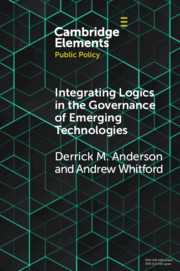Element contents
Integrating Logics in the Governance of Emerging Technologies
Published online by Cambridge University Press: 18 March 2021
Summary
- Type
- Element
- Information
- Series: Elements in Public PolicyOnline ISBN: 9781108592024Publisher: Cambridge University PressPrint publication: 24 June 2021
References
- 16
- Cited by

